Art
Over the course of the Renaissance, a large range of art was crafted. This art depicted many different perspectives and ideas. Different 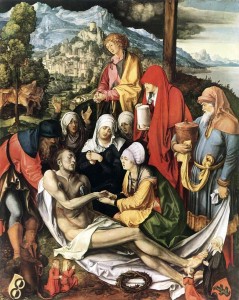 forms of colour, light, imagery and realism were used to convey the artist’s message. During the Renaissance, art began to evolve in terms of style as well as content.
forms of colour, light, imagery and realism were used to convey the artist’s message. During the Renaissance, art began to evolve in terms of style as well as content.
One of the most impressive masterpieces pieces was created in the 15th century and was known as “The Expulsion”. This piece was painted in 1426 by the Italian artist Masaccio. The painting depicts Adam and Eve as they are being expelled from the Garden of Eden. In this painting, Adam and Eve are shown walking nude, while a cherub angel flies over them. This artist portrays a really bleak scenario as the suffering of Adam and Eve is shown in their facial features, with suffering and despair being evident. This creation gave a very realistic look into the devastation that occurred as a result of being asked to leave the garden. The Bible does not quite do justice to the devastation of being expelled from home. This painting effectively captures that concept.
The “Crucifixion of Rimini” was painted some time before 1309 by Giotto di Bondone. This painting depicts the crucifixion of Jesus Christ. This painting is impressive and realistic in appearance. Despite the portrayal of Jesus in a human way, there are some realistic elements missing from the painting. For example, the pain and suffering felt by Jesus on the crucifix is absent in this painting. This painting portrays Jesus as being at peace on the crucifix, without any wounds or pain. This style of painting was of great significance however as it led to the Riminese school of art, a style used by great painters such as Giovanni and da Rimini (Sarel).
Another great painting from the Renaissance era was “The Annunciation”, by Masolino. This painting was done between the years of 1425-1430. This painting, which depicts Mary being told by the angel Gabriel that she we will be the bearer of God, has a less realistic feel to it. The colours and lighting used make the painting appear as a drawing of the event, as opposed to a realistic depiction. In this painting, Masolino also gives the impression of purity surrounding Mary, which is associated with her virginity. This creation has great value as it has become one of the most common paintings in the Catholic Church.
“The Battle of San Romano” by Paolo Uccello is another Renaissance masterpiece. The paintings are seen as Uccello’s greatest work, and deal with the Battle of San Romano fought in 1432 between Florence and Siena. “The Battle of San Romano” was a set of three paintings which were each three metres long (Harrington). The style of this painting is once again more artistic than realistic, as it is done in the same time period as Masolino’s work. This painting is also significant as it displays early forms of linear perspective in Italian Renaissance paintings. This creation had great impact on society and was one of the most popular paintings of the 15th century (Harrington).
“The Baptism of Christ” in 1450 was painted by Piello De Francesca in Tuscany, Italy. In this painting, De Francesca’s relationship with his master, Domenico Veneziano, is evident as “light painting” is used (Zuggi). This painting shows Jesus being baptised by John as a dove flies over his head. Christ, the hand of John, and the dove form an axis which divides the painting into two symmetrical parts (Zuggi). The three angels on the left in the painting all wear different clothes but hold hands. This is an allusion to the hope that, one day, the different factions of the church could be united (Zuggi). The main significance of this painting is De Francesca’s attention to geometry and perspective (Zuggi). De Francesca was renowned during his time for these skills.
“The Portinari Altarpiece” is a painting from around 1475 by a Flemish painter named Hugh van der Goes. The style of this particular painting was oil on wood. It was divided into three panels, with each panel containing a depiction of a different event. On the panels on the right and left, van der Goes depicted himself and his family. The centre drawing contained the three shepherds falling on their knees before Jesus. In the backgrounds of the panels, van der Goes alluded to biblical events such as the magi on the road to Bethlehem and Joseph fleeing to Egypt. The painting also made allusions to the last supper, the Eucharist and the passion. This altarpiece had a massive impact on Florence when it was first displayed in 1483, and many sought to emulate it.
“The Ghent Altarpiece”, completed in 1432, is considered a masterpiece in Belgium, and is seen as one of the world’s great treasures. On the upper panel of this altarpiece, Jesus, Mary, John the Baptist, Adam, Eve, Cain, Abel and singing angels are portrayed. On the lower panel, the main feature is the adoration of the lamb. All in all, there are twenty four different images depicted on the altarpiece. This painting is seen as one of the more complex of its time. Its complexity is rooted in the fact that the painters, Hubert and Jan van Eyck, incorporated elements of earth’s beauty along with religious elements (Kurtz). This complexity made The Ghent Altarpiece into one of the most famous and sought after paintings of its time.
“The Construction of the Temple of Jerusalem” was a painting by Jean Fouquet around 1445. The painting which is also oil based, depicts the intense amount of labour which went into building the temple. Fouquet’s painting is significant for the Renaissance as Fouquet was the first to combine two styles of art. He fused the experiments of Italian painting with the attention to detail of Flemish art to create this masterpiece. Through this painting, Fouquet was able to branch out and become the royal painter to Louis XI. This painting also led Fouquet to be seen as the most significant French painter of the 15th century.
Over the course of the Renaissance, art was of great significance. Art had a variety of different meanings and statements within each painting. Some depicted suffering, such as The Expulsion. Others were innovative in their methods, such as Fouquet, who combined different styles from around Europe. Great art such as The Ghent Altarpiece was also formed during this time period and paved the way for many great artistic creations to come. The Renaissance saw a major expansion in art that continued for centuries to come.
Literature
During the Renaissance, several major literary developments also occurred. However, four particular developments stand out in 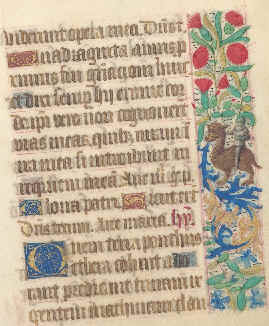 terms of significance. These four developments are: the introduction of the printing press, by Johannes Gutenberg; the works of William Shakespeare; Italian Renaissance literature; and the novel “Don Quixote”. These works had major importance in their own time and continue to have a major impact on current society.
terms of significance. These four developments are: the introduction of the printing press, by Johannes Gutenberg; the works of William Shakespeare; Italian Renaissance literature; and the novel “Don Quixote”. These works had major importance in their own time and continue to have a major impact on current society.
Gutenberg was a German goldsmith and printer born in 1398 in Mainz. Gutenberg was the first European to use movable type printing, which is the system of using movable components to recreate the elements of a document. As a result, Gutenberg is seen as the global father of the printing press. The use of movable type printing was a major improvement over the handwritten manuscript which was being used at the time (People of the Millennium). Gutenberg, who was not successful in his lifetime, left a lasting legacy on Europe and the world (People of the Millennium). As a result of his invention, literature was able to be produced more efficiently and was thus able to be distributed much more quickly. This helped feed the incredible growth being produced by the Renaissance, and, through scientific methods, the printing press became a major catalyst for the scientific revolution (People of the Millennium). Authors like Mark Twain later said that the world would not be where it is today without Gutenberg (People of the Millennium).
Another major literary development during the Renaissance was the works of William Shakespeare. Shakespeare was an English poet and playwright born in 1564 in Stratford upon Avon. Shakespeare`s work has left a lasting mark on the English language and culture. Shakespeare had innovative ideas in his plays, such as the use of romance in tragedy and the use of soliloquies to display the character`s thoughts (Shakespeare, William). These innovations later influenced great authors such as Dickens and Melville. Shakespeare`s biggest impact was in the way he revolutionized the English language. Before the sixteenth century, English was seen as a crude language, while French and Latin were more respected (Shakespeare, William). However, many critics state that Shakespeare “dignified“ the English language. Shakespeare has been credited with coming up with over 8000 words and phrases in the English language (Shakespeare, William). In addition, Shakespeare`s perfection of blank verse helped make English much more flexible and easy to speak (Shakespeare, William). With English now being the most dominant language in the world, Shakespeare`s impact is undeniable.
Italian Renaissance literature was also very significant to the literary developments which occurred during the Renaissance. The first of these major developments occurred in 1282 and was called lyric poetry. In this school of thought, people would express the power in which love inspired their souls. Dante, the greatest Italian poet of all time, wrote during this period (World of Dante). Dante created great works in which he idealized love. During this time, “Divine Comedy” was developed, immortalizing Dante (World of Dante). This comedy tells of Dante`s travels through hell, purgatory and paradise, and marked his genius above all other poets in Italy. The other extremely significant development which occurred during Italian Renaissance literature was the rediscovery of Greek and Roman theatre. Through this discovery, literature and drama were able to evolve from the plays of the Middle Ages, and into a more modern age.
The last major significant literary development during the Renaissance was the novel, “Don Quixote”.” Don Quixote” was a novel written by Miguel de Cervantes. The basis for the story is a Moorish chronicler of Don Quixote named Cide Hamete Benengeli. This novel had great impact on the world in a cultural and literary sense. The idea displayed in the novel, that individuals can be right while society can be wrong, carried significant weight, especially after the French revolution (Flaubert and Don Quixote). The novel also showed how approaching a situation with a knight`s nobility does not always receive positive results. For example, Quixote helps free a group of mistreated slaves. Once he frees them all, he asks that they honour his Lady Dulcinea, but instead they pelt Quixote with stones (Flaubert and Don Quixote). Now in the 20th century, Don Quixote as seen is the foundation of modern literature and was voted by the Nobel Institute as the Greatest Book of All Time (Flaubert and Don Quixote).
These four developments had a major impact during their time and today. The printing press helped make reading more accessible throughout Europe and was a catalyst for the scientific revolution. The works of William Shakespeare revolutionized theatre and added several new words and terms to English. The Italian Renaissance brought great poets like Dante and brought back Roman and Greek theatre. Finally, “Don Quixote” displayed many important ideas about society and is regarded as the greatest novel of all time.
Inventions
During the Renaissance, there were also several major inventions which have shaped Western Civilization since. Some of these  inventions had civil uses, such as the portable clock or eyeglasses. There were also great scientific inventions during this time period such as the microscope and telescope. During this time, great military advancement occurred as well with the introduction of gunpowder.
inventions had civil uses, such as the portable clock or eyeglasses. There were also great scientific inventions during this time period such as the microscope and telescope. During this time, great military advancement occurred as well with the introduction of gunpowder.
During the Renaissance, the first portable clocks were developed around 1410. They were developed by a man named Fillipo Brunelleschi, who was a famous architect, in Florence, Italy (Inventions and Technology). Before this time, clocks were massive devices which had to be in a fixed spot. With the introduction of this spring loaded clock, people were now able to know the time wherever they went. From this major development, clocks began to evolve and developed into the significant device they have become today.
Another significant invention from the Renaissance period is the development of eye glasses, or spectacles (Inventions and Technology). There is much debate and uncertainty as to who the inventor of spectacles was, but great advancement in the area did occur. The earliest form of spectacles contained convex lenses, which corrected a variety of problems. The most important corrections made through this invention were farsightedness, and presbyopia, which is the inability to focus on close objects as one gets older (History of Eyeglasses or Spectacles). These early developments during the Renaissance led to great advancements such as bifocals and lenses which corrected astigmatism. This was obviously a tremendous invention, as many people today, including the world’s greatest teachers, wear corrective lenses.
The first microscopes were invented in Holland in 1590 by a man named Hans Janssen (Inventions and Technology). These first microscopes were in compound form and contained two lenses. The purpose of these microscopes was to be able to see things which were too small for the naked eye. Although this invention was made for simplistic purposes, it eventually developed into a scientific mechanism. Anton van Leeuwenhoek was the first person to study bacteria under a microscope. Through this invention, the biological march of science really began to take off.
In 1608 the telescope was invented by Hans Lippershy. After the microscope was invented to help see objects which were too small, Lippershy decided to figure out an object to help see things which were too distant (Inventions and Technology). He combined two lenses and a tube in a different way from the microscope, which allowed for different objects to be seen. Through the use of concave and convex lenses, Lippershy was able to magnify planets and stars (Inventions and Technology). Through this invention, Galileo Galilei was able to invent telescopes with up to thirty times magnification, and was able to develop many of his theories about the solar system and the stars (Inventions and Technology). This invention also arguably began to fuel man’s desire to reach space, which was a major development in the twentieth century, and continues to develop today.
Military Development
A major military development also occurred during this time period as well. The introduction of gun powder had massive 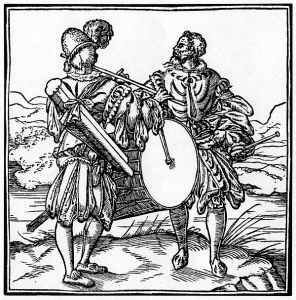 implications on war and military technology, which are still felt today. Gunpowder has its roots in the 13th century in China, when the Chinese attempted to thwart the invading Mongolians (History and Art of Shotshells). However, in Europe, the corning of gunpowder was invented. In this process, gunpowder was moisturized, which helped increase its reliability and consistency. This gunpowder was far easier to load and a lot more powerful than any earlier form of gunpowder. This also reduced the dust explosion which occurred from the gunpowder being too dry. This development led to rapid military advancements in the form of artillery, as well as rockets. This invention basically made fighting a war much easier and less time-consuming. As a result of this invention, the military and colonial conquests of European nations became more efficient and a more successful.
implications on war and military technology, which are still felt today. Gunpowder has its roots in the 13th century in China, when the Chinese attempted to thwart the invading Mongolians (History and Art of Shotshells). However, in Europe, the corning of gunpowder was invented. In this process, gunpowder was moisturized, which helped increase its reliability and consistency. This gunpowder was far easier to load and a lot more powerful than any earlier form of gunpowder. This also reduced the dust explosion which occurred from the gunpowder being too dry. This development led to rapid military advancements in the form of artillery, as well as rockets. This invention basically made fighting a war much easier and less time-consuming. As a result of this invention, the military and colonial conquests of European nations became more efficient and a more successful.
Through these inventions, it becomes obvious that the Renaissance was a period of great technological advancement. Advancements in day-to- day life, such as the portable clock and eyeglasses, were created. These helped further the process of knowledge and increased the quality of life greatly. Scientific advancements such as the microscope and telescope helped give people a better understanding of our world, as well as the surrounding universe. Great military achievements such as gunpowder helped expand military conquest and the art of war. These inventions are all very significant as their impact can still be felt today.
Enlightenment
An important development which occurred during the Renaissance was a shift in thought. Previously, thought had revolved around God, but as things continued to change, a more humanistic approach to thought occurred. This had massive ramifications on the educational, religious and political systems. The idea that one had a pre-destined life gave way to the concept that one could work with their abilities to make something more of themselves. This shift in thought still shapes the world today.
Humanism is essentially a viewpoint which sees humans as being of primary importance. Important concepts include the 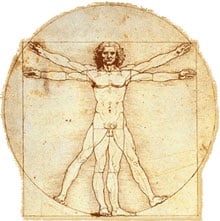 significance of human dignity, human concerns and human capabilities. Humanism in the Renaissance period dates back to the Italian philosopher, Petrarch (Rereading the Renaissance). Petrarch imposed an interesting idea on people, which gave merit to humanism. He showed how secular achievements did not make one less connected with God. Petrarch showed how God had given every human certain abilities and that it was up to them to use these abilities to the fullest potential. This introduction of humanism led to great intellectual growth during the Renaissance.
significance of human dignity, human concerns and human capabilities. Humanism in the Renaissance period dates back to the Italian philosopher, Petrarch (Rereading the Renaissance). Petrarch imposed an interesting idea on people, which gave merit to humanism. He showed how secular achievements did not make one less connected with God. Petrarch showed how God had given every human certain abilities and that it was up to them to use these abilities to the fullest potential. This introduction of humanism led to great intellectual growth during the Renaissance.
Humanism had great impact on education during the Renaissance period. Obviously, the main thing that humanism stressed was that all humans are capable of using their talents to achieve great things. This made the process of knowledge and the ability to learn and study much more accessible to all people. People now had the opportunity to greatly further their drive to succeed and be educated. As a result of humanism, a lot more people with different ideas and innovations began to appear in Europe, as people started to use their creative abilities.
Humanism also had a tremendous effect on the Renaissance from a political standpoint. As a result of the new humanistic approach, leadership began to change. Prior to humanism, almost all leaders were affiliated with the church. However, with the rise of humanism, secular leaders began to become more and more common. The theory from the Middle Ages, which stated that the Pope had the divine right and could overrule any decision made by a leader, was becoming less and less common. A separation between church and state started to slowly appear in Europe as a result of humanism.
Humanism had a dramatic effect on religion as well. Before humanism, a dogma in Roman Catholic theology called “papal infallibility” existed, which basically stated that the pope was incapable of error. As a result of humanism, this idea began to come into question in certain aspects. The idea that the pope was always correct in every aspect was obviously not logical, and after the rise of humanism, no longer held the same merit. The idea that secular achievements could also help enhance the church started to appear during this era as well. Humanism included religious teachings, which told people to live life to the fullest, as opposed to a sad and gloomy existence. Humanism undoubtedly reduced the absolute power which the Catholic Church had in certain areas of Europe.
Humanism had many implications in Europe. The newly educated and affluent middle class were greatly affected by the rise in humanism. Those living in the Italian city states began to rise up and start to take more control in their society. The production of rational and natural law based thought also sprung up as the result of humanism. However, the most important impact that humanism had was not felt for years. Humanism was one of the major catalysts behind the Enlightenment, which made reason the primary source of legitimacy and authority. As a catalyst for Enlightenment, humanism made an impact which is still felt greatly in society today.
Humanism led to great achievements in Europe during the Renaissance. Humanism brought new ideas to Europe that helped increase the capacity of achievement for every person living in Europe. Reforms were instituted in education, politics, and religion, which ultimately helped advance and modernize society. The outcome of humanism, which led to improvements in the middle class and the starting point of the Enlightenment, cannot be overstated.
Education
During the Renaissance, education changed dramatically. The previous ways in which people were educated during the Middle Ages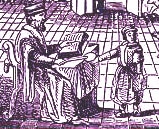 became obsolete and new methods of education became more desired. This form of education taught people more about history, as well as the human potential. The change in education also impacted women, and gave birth to the idea of feminist thought.
became obsolete and new methods of education became more desired. This form of education taught people more about history, as well as the human potential. The change in education also impacted women, and gave birth to the idea of feminist thought.
During the Middle Ages, most of the educational emphasis was placed on theology as well as spiritual ideals. However, at the inception of the Renaissance, this slowly began to change. The idea that man was inherently unworthy as a result of original sin slowly began to give way to more modern, forward-thinking ideals. Humanists worked vehemently to destroy the methods of teaching which had occurred during the Middle Ages. In Renaissance education, people began to be taught the classics, and many became well-versed in this area. As a result of the growth of humanism, moral philosophies, as well as the humanities, began to become much more revered. The focus on the capabilities of the individual was stressed heavily during this time period as well.
As the Renaissance continued, the purposes of education began to change slowly as well. As stated, at the start of the Renaissance, the classics, humanities and the capability of the individual were the main points of education. (Renaissance Education) However, as time wore on, a newer ideal of education began to appear. Education in later Renaissance periods was based around far more practical purposes. The Renaissance values of wisdom, morality and virtue began to become more dominant (Renaissance Education).
Education during the Renaissance also had a great impact on women. Most women during this time period were not fortunate enough to receive an education. The exception to this was daughters of aristocratic males, who were taught at home by the highest level scholars in Europe (Renaissance Handbook). Middle class females who were the daughters of merchants would sometimes be sent to convents where they would be educated (Renaissance Handbook). Poor females did not really receive any form of scholastic education during the Renaissance. The poor were only educated in how to spin, sew, cook, and efficiently manage a household.
Women’s Rights
During the Renaissance, some dramatic changes began to occur with women. The foundations for what later would become feminism 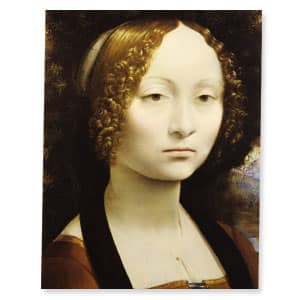 were set during this time period. A woman named Christine de Pizan is seen as the first female to really display feminist ideals with her book, “The Book of the City of Ladies”. In this book, de Pizan wrote of different females and their contributions to society. The book also showed women alternate ways to use their abilities in order to counteract the high degree of misogyny that existed during the time period (Christine de Pizan: An Illuminated Voice). At this point in time, humanists also began to believe that women who were aristocratic deserved to have at least a minimal education. Women obviously still had very limited educational rights during this time period as they were not really welcome to participate in intellectual activities such as debate and lecture. The main purpose of women during the Renaissance remained marriage and child-bearing. However, the Renaissance represented the beginning of a slow change in thought, which would eventually lead to great change. Through the works of people like de Pizan, women began to think their role in society could change. This time period was a great catalyst to the emergence of people like Simone de Beauvoir and the whole feminist movement.
were set during this time period. A woman named Christine de Pizan is seen as the first female to really display feminist ideals with her book, “The Book of the City of Ladies”. In this book, de Pizan wrote of different females and their contributions to society. The book also showed women alternate ways to use their abilities in order to counteract the high degree of misogyny that existed during the time period (Christine de Pizan: An Illuminated Voice). At this point in time, humanists also began to believe that women who were aristocratic deserved to have at least a minimal education. Women obviously still had very limited educational rights during this time period as they were not really welcome to participate in intellectual activities such as debate and lecture. The main purpose of women during the Renaissance remained marriage and child-bearing. However, the Renaissance represented the beginning of a slow change in thought, which would eventually lead to great change. Through the works of people like de Pizan, women began to think their role in society could change. This time period was a great catalyst to the emergence of people like Simone de Beauvoir and the whole feminist movement.
Religion & Philosophy
Education was just another large change in philosophy that is associated with the Renaissance. The teachings of the Middle Ages, which limited man’s knowledge, had finally given way to a more efficient way of learning. The reintegration of the classics into education made people much more learned and improved philosophy greatly. The focus on theology and spiritual ideals had given way to a focus on the massive human potential that existed. Women also finally started to make themselves heard when it came to education. This was the first time in Europe when women started to think that they could be educated and achieve success at the same rate as men. Education in the Renaissance sparked a period of great change.
Over the course of the Renaissance, the role of the Catholic Church began to change dramatically as well. The Catholic Church held 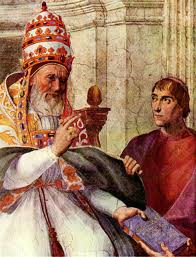 great power during the Middle Ages and the Renaissance brought this into question. The role of the church was completely re-examined, and great reforms were instituted. As a result of the reforms which occurred during this time period, the Catholic Church changed forever. These reforms would also eventually led to the end of the Renaissance in Italy and most of the European continent.
great power during the Middle Ages and the Renaissance brought this into question. The role of the church was completely re-examined, and great reforms were instituted. As a result of the reforms which occurred during this time period, the Catholic Church changed forever. These reforms would also eventually led to the end of the Renaissance in Italy and most of the European continent.
During the Renaissance, there was clearly a renewal in the study of classical literature. This brought about a wide-scale re-examination of what was being taught and what people believed. The churches and cathedrals had long served as a sanctuary to the uneducated masses of Europe. However, this would begin to change. Books written such as “The Praise of Folly” began to seriously call into question the Catholic Church. This book painted a picture of the church as being a truly corrupt place.
During this period, a movement known as the conciliarism began to develop. This occurred as a result of people beginning to realize that the Catholic Church, as well as the pope, were quite corrupt. This resulted in the idea that the final authority in spiritual matters should reside with the Church, as a group of Christians, as opposed to the pope. This movement began on the basis that there had been times where the pope had fallen into heresy, particularly Pope John XXII. This movement sought to contradict the idea of papal infallibility, which had been so dominant during the Middle Ages.
As a result of the continued corruption of the Catholic Church, more ideas began to spread about different ways to worship God. In 1517, Martin Luther released his “Ninety Five Theses” to several bishops to spark debate on the church. These theses questioned many doctrines of the church and greatly questioned how the Church sold indulgences. People such as Zwingli and Calvin began to criticize the Catholic Church as well. As people continued to challenge the Catholic Church, the Protestant Reformation developed. Reformations began to occur all over Europe, sparking wars in Germany and France. Many of the disputes were over theological differences between reformists and the Catholic Church. In England, Henry VIII wanted annulment from his marriage, so he started a reformation in his country based on political motives. As more people began to reform, the Catholic Church lost its monopoly on religion which it had held for centuries in Europe.
As a result of the Catholic Church changing, several outcomes occurred which effectively ended the Renaissance. First, the reformation, which saw the church break off into several new forms of Christianity, had a large effect on the dawn of a new era. The counter-reformation, which brought about change and revival to the Catholic Church, also signified the end of an era. This counter-reformation also led to the Baroque period, which saw a shift in artwork from the Renaissance. The Catholic Church now wanted religious artwork which had dynamic movement and emotional involvement. The Age of Enlightenment, which used reason as the prime basis for authority, was also beginning to develop. As a result of this new age developing, the Renaissance began to become a more distant reality for the people of Europe. As a result of all of these different events occurring together, the Renaissance officially came to a close.
The Renaissance was a very interesting and exciting time period in Europe. Artwork had a monumental impact and evolved dramatically from the beginning of the Renaissance to the end. Literary works such as Don Quixote and the plays of Shakespeare revolutionized human perspective and also helped shaped the modernity of languages today. The Renaissance also led to great inventions such as the portable clock and the microscope, which still play a large role in society today. Thought also changed tremendously during this period. With the introduction of humanism, the mind expanded greatly and humans achieved levels of greatness which had not been seen for a while. Humanism also greatly impacted education during the Renaissance and helped lead to the eventual feminist movement. Furthermore, humanism impacted the Catholic Church and caused several reformations to religious ideals. One can truly say through studying the Renaissance that this era had it all.
Works Cited
Eimerl, Sarel. The World of Giotto. Time-Life Books, n.d. Web. 24 Mar. 2010.
Harrington, Peter. Military history’s loss is Art History’s Gain. N.p., n.d.
Web. 24 Mar. 2010.
Zuggi, Stefano. Piero Della Francesca. N.p., n.d. Web. 24 Mar. 2010.
Kurtz, Michael J. America and the Return of Nazi Contraband. N.p., n.d. Web. 24
Mar. 2010.
“People of the Millennium.” http://www.newadvent.org/cathen/07090a.htm. N.p.,
2009. Web. 24 Mar. 2010. <http://www.newadvent.org/cathen/
07090a.htm>.
“Shakespeare, William.” http://encyclopedia2.thefreedictionary.com/
Shakespeare%2c+William. N.p., n.d. Web. 24 Mar. 2010.
<http://encyclopedia2.thefreedictionary.com/Shakespeare%2c+William>.
“World of Dante.” http://www.worldofdante.org/. N.p., n.d. Web. 24 Mar. 2010.
<http://www.worldofdante.org/>.
Fox, Soledad. “Flaubert and Don Quixote.” http://www.sussex-academic.co.uk/sa/
titles/literary_criticism/Fox.htm. N.p., n.d. Web. 24 Mar. 2010.
<http://www.sussex-academic.co.uk/sa/titles/literary_criticism/Fox.htm>.
Sorkin, Adam. “Inventions and Technology.” http://www.nides.bc.ca/assignments/
invent69/renaissance1.htm. N.p., n.d. Web. 24 Mar. 2010.
<http://www.nides.bc.ca/assignments/invent69/renaissance1.htm>.
Bellis, Mary. “The History of Eyeglasses or Spectacles.”
http://inventors.about.com/od/gstartinventions/a/glass_3.htm. N.p.,
n.d. Web. 24 Mar. 2010. <http://inventors.about.com/od/gstartinventions/
a/glass_3.htm>.
Farrar, Jon. “The History and Art of Shotshells.” http://www.ngpc.state.ne.us/
nebland/articles/history/shotshells.asp. N.p., n.d. Web. 24 Mar. 2010.
<http://www.ngpc.state.ne.us/nebland/articles/history/shotshells.asp>.
Everhart, Carol. “Rereading the Renaissance.” http://www.press.umich.edu/
titleDetailDesc.do?id=15299. N.p., n.d. Web. 24 Mar. 2010.
<http://www.press.umich.edu/titleDetailDesc.do?id=15299>.
“Renaissance Education.” http://www.radessays.com/viewpaper/23962/
Renaissance_Education.html. N.p., n.d. Web. 24 Mar. 2010.
<http://www.radessays.com/viewpaper/23962/Renaissance_Education.html>.
“Handbook of the Renaissance.” http://www.renaissancehandbook.com/
excerpt1.htm. N.p., n.d. Web. 24 Mar. 2010.
<http://www.renaissancehandbook.com/excerpt1.htm>.
Ripley, Dore. “CHRISTINE de PIZAN: An Illuminated Voice.”
http://www.ripleyonline.com/Under%20Discussion/Christine/Christine.htm.
N.p., n.d. Web. 24 Mar. 2010. <http://www.ripleyonline.com/
Under%20Discussion/Christine/Christine.htm>.

very useful info I could use in school; thanks and I will give you credit
thank you for the information my grade 8 class will need this info
I like this website it gives me the right info I need to know about!